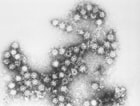Compromised interaction between gut microbes in infants and toddlers who go on to develop type 1 diabetes might play a role in the pathogenesis of anti-islet–cell autoimmunity and consequent development of the disease, new results from the largest study of its kind indicate.
The work was published online March 7 in Diabetes.
The researchers, from the Institute of Diabetes Research, Helmholtz Zentrum, Munich, Germany, also found that the gut microbiome at an early age was strongly influenced by factors such as delivery mode and fundamental changes in nutrition.
"Our findings suggest that alterations in the establishment of the early gut microbiome, in particular in the interaction between bacteria, might lead to unfavorable conditions and a compromised 'cross talk' between the gut microbiome and the host immune system," said David Endesfelder, PhD, in an interview with Medscape Medical News.
"In combination with environmental triggers occurring later in life, these conditions might eventually cause the development of autoimmunity."
Comparison of Gut Microbes, Feeding, and Delivery Mode
The researchers looked at the gut microbiomes of children who were participants in the German prospective BABYDIET study. This examined the nutritional factors that might influence the risk of type 1 diabetes in infants at increased familial risk for the disease. Children were monitored from birth for the development of anti-islet–cell autoantibodies and subsequent diabetes.
The researchers compared the composition and interaction of gut microbiomes in 2 groups: children who did and those did not develop anti-islet–cell autoantibodies in their blood. A total of 298 stool samples from birth to 3 years of age were prospectively taken from 22 children who developed such autoantibodies and 22 matched control children who did not. The samples were used to determine the diversity and number of bacteria present, as well as the bacterial interaction networks.
Data were also collected on breastfeeding and its duration and the introduction of solid food (gluten-free and gluten-containing cereals, vegetables, fruits), as reported in daily food records. Also, mode of delivery, whether vaginal or cesarean, was obtained from obstetric records.
Elaborating further, Dr. Endesfelder explained delivery mode may play a role because infants born by cesarean, as compared with those delivered vaginally, might not get the 'proper' initial microbial configurations from their mothers.
"These children might…lack bacteria that are important for the initial establishment of the immune system. We therefore suspect that early bacterial networks might be influenced by birth delivery mode, leading to microbial configurations that can eventually favor the development of autoimmunity."
Hence, delivery mode, feeding method, and timing of introduction of solid foods, among other confounders, "should be considered when analyzing bacterial abundances in young children," he and his colleagues observe.
"Cross Talk" of the Gut Microbiome Important
Dr. Endesfelder explained that previous work on the link between the gut microbiome and disease has focused on differences in the abundances of various bacteria, but this approach had not delivered a unifying theory to date. In an effort to progress this research, he and his colleagues aimed to analyze the microbial community and its interactions as a whole.
"Our work was based on the paradigm that the functional entity provided by the microbial community is the major driver in microbial-host interaction, rather than [a] single bacterial species within the assembly."
Indeed, the differences they found between anti-islet–cell autoantibody-positive and -negative children were not in bacterial diversity, microbial composition, or single genus abundances. Rather, as predicted, there were substantial alterations in microbial interaction networks at age 6 months and 2 years, but not at age 1 year, in the children who developed anti-islet–cell autoantibodies.
"It is the functional entity the microbial community provides as a whole that the host's immune system is reacting to, rather than the characteristics of single bacterial species," Dr. Endesfelder explained.
"Since many of the children changed from breast-feeding to solid food and we found the most pronounced shift of large-scale bacterial distributions between 6 months and 1 year, we suspect that strong nutritional effects may mask anti-islet–cell autoimmunity associations with bacterial networks around age 1 year," he and his colleagues explain.
Effectively, the findings show that in an infant who is likely to develop type 1 diabetes, these various microbial communities fail to "talk" to each other or to properly respond to change in the gut microenvironment.
Understanding how these microbes act in concert is key, said Dr. Endesfelder, since bacterial species are never found in isolation within the intestinal tract.
But he and his colleague caution that both the study and control subjects were from families with an increased genetic susceptibility to type 1 diabetes, "and it is possible that our findings may not represent the microbiome status of children from the general population."
Nevertheless, the work lays the foundations for further studies to better understand the initial shaping of the microbial community and its interaction with the host during early life, which could help determine how potential triggers lead to the development of anti-islet–cell autoantibodies later on, they conclude.
Diabetes. Published online March 7, 2014. Abstract


